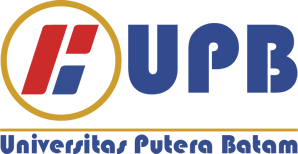PENGARUH PERPUTARAN PIUTANG DAN PERPUTARAN KAS TERHADAP PROFITABILITAS PERUSAHAAN FOOD AND BEVERAGE YANG TERDAFTAR DI BEI
Kata Kunci:
Receivable Turnover, Cash Turnover, ProfitabilityAbstrak
Profitabilityiis the company's ability to make a profit. ProfitabilityiRatio describesithe ability of aicompany to generateiprofit relatively. Relative here means profit is not measured fromithe magnitude of the absolute, but compared with other benchmark elements, becauseilarge profits may not necessarily indicate a great profitability. Measurementiof the company's financial performance with ROA showsitheiabilityiof the capital investediinithe overall assetsiowned to generate profits. This research was conducted to examine the effect of Receivable Turnover, Cash Turnover on Profitability (Return on Assets) on Food andiBeverageicompanies listed on the Indonesia Stock Exchange. In this case the researcheriused the audited and published financial statements of manufacturingicompaniesiin the industrialisector oficonsumerigoods. at theiendiof the yearilisted on IDX toiavoidicheating on financial statements. In this study, researchers used a sample of eleven samples selected byipurposive sampling. Analyzer used in this research is multiple linear regression analysis, hypothesis testing (coefficient ofidetermination, t testiand test F tested withiclassical assumptionitest and descriptive analysis.Based on theiresults of research data analysis can be concluded that the resultsiof this study showed that the receivable turnover partially significant effect on profitability, cashiturnover partially significant effect on profitability Simultaneouslyiturnover receivablesiand cash turnoverisignificant effectioniprofitability.
Referensi
Bramasto, A. (2008). Analisis Perputaran Aktiva Tetap dan Perputaran Piutang Kaitannya Terhadap Return On Asset Pada Pt POS Indonesia (persero).
Diana, P. A. (2016). Pengaruh Perputaran Kas, Piutang, Persediaan terhadap Profitabilitas Pada Perusahaan Semen di BEI. Jurnal Ilmu Manajemen Sekolah Tinggi Ilmu Ekonomi Indonesia (STIESIA) Surabaya, 5, 1–18.
Faisal, Mu. (2017). PENGARUH PERPUTARAN KAS, PERPUTARAN PIUTANG, DAN PERPUTARAN PERSEDIAAN TERHADAP PROFITABILITAS (Studi kasus Pada Perusahaan Manufaktur Yang Terdaftar Di Bursa Efek Indonesia Periode 2004 – 2014), 5, 1–16.
Harahap, S. S. (2010). Analisis Kritis Laporan Keuangan. Jakarta: Rajawali Pers. Ikatan Akuntan Indonesia. (2007). Standar Profesional Akuntan Publik. Jakarta: Salemba Empat.
Kasmir. (2010). Pengantar Manajemen Keuangan. Jakarta: Kencana Prenada Media Group. Kasmir. (2011). Analisis Laporan Keuangan. Jakarta: Raja grafindo Persada.
Kasmir. (2012). Analisis Laporan Keuangan. Jakarta: PT. Raja Grafindo Persada. Munawir. (2007). Analisa Laporan Keuangan. Yogyakarta: Liberty.
Munawir. (2010). Analisa Laporan Keuangan. Yogyakarta: Liberty. Priyatno, D. (2011). Buku Pintar Statistik Komputer. Mediakom.
Suarnami, L. K., Suwendra, I. W., & Cipta, W. (2014). Pengaruh Perputaran Piutang Dan Periode Pengumpulan Piutang Terhadap Profitabilitas Pada Perusahaan Pembiayaan. E-Journal Bisma Universitas Pendidikan Ganesha Jurusan Manajemen, 2, 1–8.
Sugiyono. (2015). Metode Penelitian Kuantitatif Kualitatif dan R&D. ALFABETA.
Sujarweni, W. (2016). Kupas Tuntas Penelitian Akuntansi dengan SPSS. Pustaka Baru Press.
V Wiratna, S. (2016). Kupas Tuntas Penelitian Akuntansi dengan SPSS. Pustaka baru Press.
Wibowo, A. E. (2012). Aplikasi Praktis SPSS Dalam Penelitian. Gava Media.





